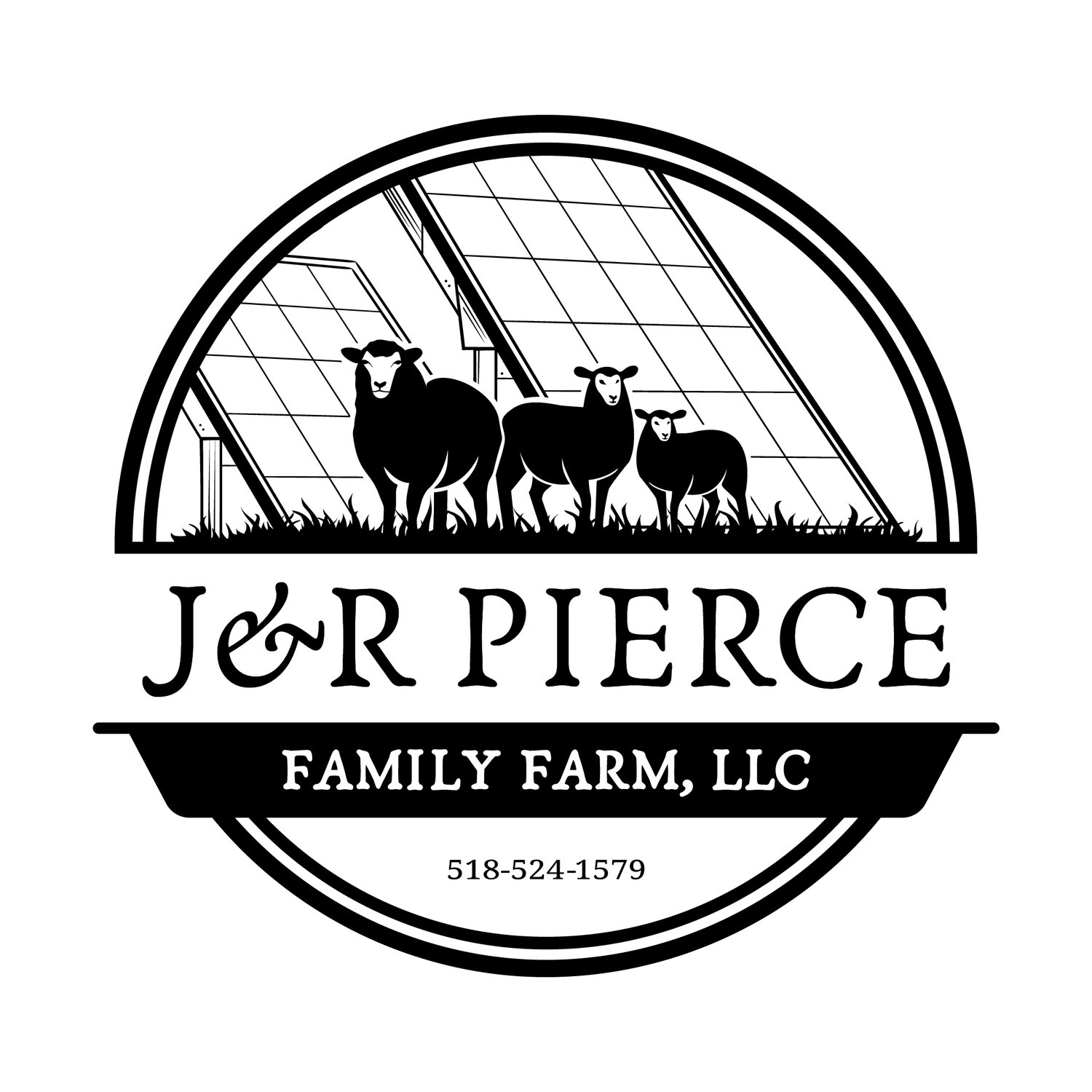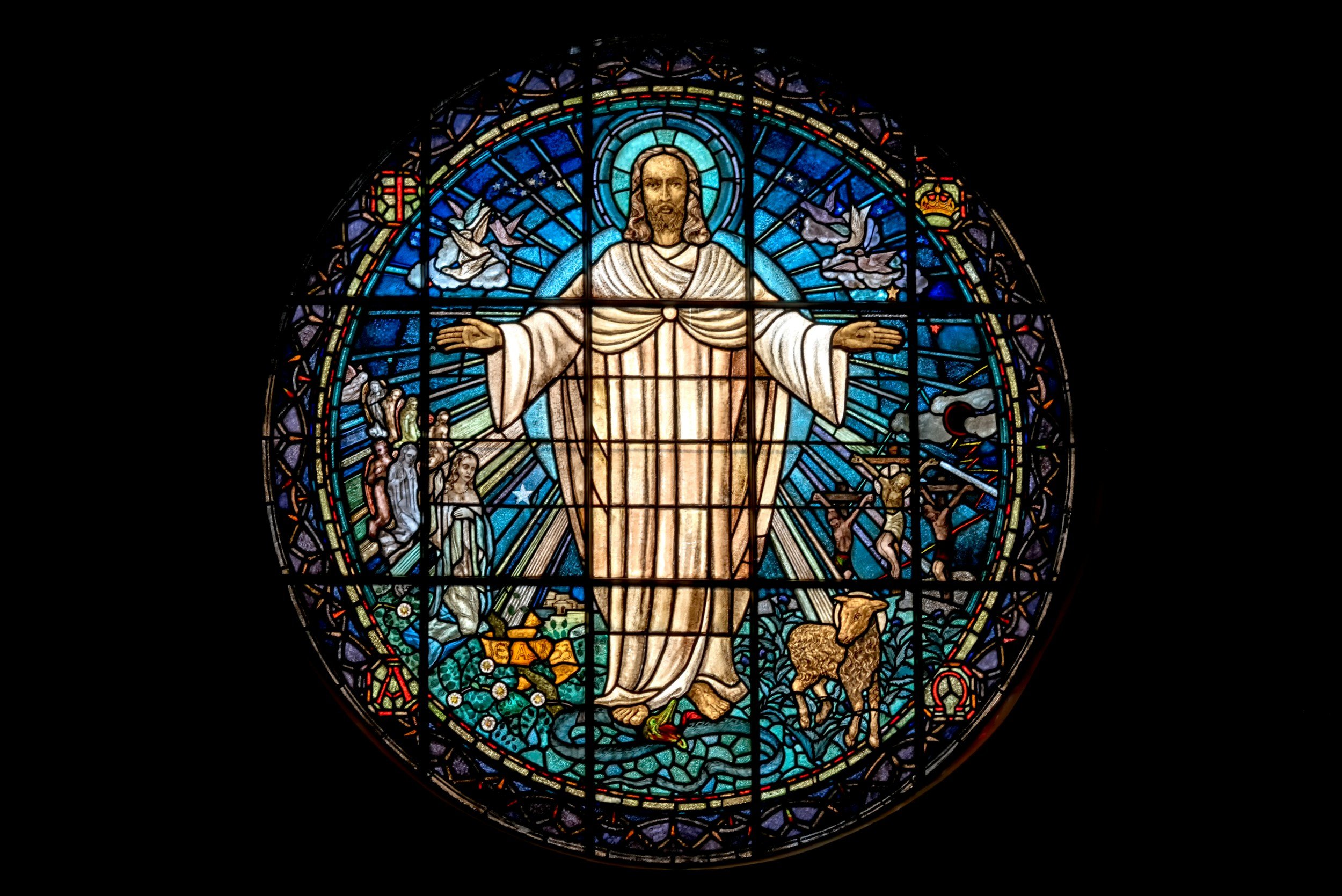The Role of Lamb in Religious Tradition
To all those who celebrate, happy Easter weekend.
This time of year holds significance for people of many different faiths, including Judaism, Christianity, and Islam. Because of this, I felt a post discussing the lamb’s significance in each religion might be interesting.
Please feel free to correct me if you notice any inaccuracies; while I know a lot about agriculture, I am far from a religious scholar or historian!
**J&R Pierce Family Farm is a participant in the Amazon Services LLC Associates Program, an affiliate advertising program designed to allow sites to earn advertising fees by linking to products on Amazon. I often link to Amazon when recommending certain products, and if you choose to purchase, I may earn a small percentage of the sale. It costs you nothing extra, and all recommended products are ones that I personally vouch for.**
Lamb and Christianity
In Christianity, the connection to the lamb is mostly a thematic, symbolic one. Jesus Christ is often pictured with a lamb upon his shoulders and the concept of “the lamb of God” is frequently referenced and considered an integral component of the message of Christianity. The lamb is often considered the sacrificial symbol of innocence and purity.
That’s one reason why it’s common for Western societies to eat lamb at Easter. Many assume that we eat lamb for our Easter meals in March or April purely because this is the time of year when lambs are born. While this is true, it bears repeating that the lamb you eat is not the same age or size as the lamb that has recently been born.
As a reminder, lambs sold for meat are at least six to eight months old by the time they are slaughtered and weigh as much as 140 to 150 pounds. These are far from the little babies we have running around our farm right now. In fact, if you’re eating lamb this Easter, the animal, more than likely, was born last fall.
Instead, eating lamb as part of the Christian holiday has more to do with the symbolism related to Jesus as the lamb of God. The meat represents the sacrifice made by Jesus.
In general, lamb is a popular choice for Easter meals simply because it’s always been a popular traditional meal. The lamb has been a sacrificial creature for centuries, referenced multiple times in the Old Testament. While we don’t practice ritualistic sacrifice anymore, many of our modern traditions are still modeled on the customs that predate us by hundreds or thousands of years.
Lamb and Judaism
Which leads us to the Jewish faith and the Passover celebration. What is interesting is that there’s some disagreement within different traditions of the faith about whether lamb should be consumed during Passover.
Passover marks the time when God helped the Jews escape slavery by bringing 10 plagues upon the Egyptian people, during which, Jews were told to mark their doorposts with lamb blood to signal the plagues to “pass over” their homes.
Today, the Ashkenazi Jews, for the most part, do not eat lamb at the Seder meal, believing that doing so is equivalent to eating the paschal sacrifice intended to be made only at the Temple in Jerusalem.
Roast lamb was commonly eaten at Passover until about A.D.790, when the Temple in Jerusalem was destroyed and eating roast lamb was prohibited.
Other people of the Jewish faith do, however, believe in serving lamb at their Passover meals. Some do so with the condition that the lamb cannot be roasted but is instead cooked in a pan with liquid. More often than not, other foods, like brisket, roasted chicken, or gefilte fish are consumed instead. If lamb is consumed, it needs to be prepared by kosher slaughter and in most cases, it must be around 30 to 55 lbs live weight, milk fed and fat.
What is Kosher?
An animal is considered kosher slaughter if it is a ruminant and has split or cloven hooves. This includes cattle, deer, sheep, and goats, but not swine. There are varying types of kosher slaughter and production practices and, as is the case with many religious doctrines, some disagreement over what constitutes kosher and what does not.
Under some kosher interpretations, a Jewish person cannot castrate an animal, but if it has already been castrated, it can still be consumed. When it comes time for slaughter, the animal must be killed by a “shochet,” who is a Jewish person who has been trained and certified specifically for this role (often, this is a rabbi). During the slaughter, the animal must be conscious and any residual blood must be purged.
Glatt kosher goes one step further and is considered the strictest form of kosher slaughter. During this process, the lungs of the animal must be inspected for smoothness. The meat must be salted and soaked for 72 hours after slaughter to remove residual blood. Some Jewish communities, like Orthodox Jews, will only consume glatt kosher.
What is Halal?
Kosher practices are sometimes confused with halal, and while there is some overlap, the two are quite distinct indeed.
“Halal” (pronounced huh-loll) translates to “permissible” or “lawful” in Arabic and refers to food that conforms to Islamic dietary laws. It must not contain anything forbidden by Islamic law, like pork or alcohol. Meat and poultry must be slaughtered according to the method of Zabiha.
As is the case with Jewish kosher practices, there is some disagreement within the Islamic faith about what constitutes a halal slaughter. Animals that have clearly been prohibited for consumption by the Qur’an (including swine and donkeys) are obviously off the table.
However, there are some animals for which the answer is not quite so clear, including fish. Permitted animals include land animals who have flowing blood, survive on leaves or grass, and do not prey on other animals.
The law gets somewhat confusing, however, because it states that birds that do not hunt with claws and do not prey on other animals are permitted. Chickens and ducks are both included as acceptable foods, yet both do frequently prey on other animals (unless, of course, the law here is not referring to insects and small mammals like mice, lizards, and frogs as “animals”).
What is Halal Slaughter?
For slaughter, the person doing the work must be either Muslim or from the People of the Book (Jewish or Christian). The name of Allah must be said at the time of slaughter while facing Mecca, and the halal prayer must be said for each animal.
There’s some debate over what constitutes a halal slaughter; some say the animal must be slaughtered with an incision below the glottis with a swift cut severing the jugular vein, trachea, and esophagus, with no stunning allowed. Others diverge from this and have approved restraining boxes and the use of stunning.
This is problematic in certain parts of the world, where it is illegal to slaughter animals without pre-stunning (including Denmark). Many have argued that this practice leads to unnecessary suffering on the part of the animal.
Here in the United States, both kosher and halal slaughter are permitted, though this is certainly not something offered by every farm. In the past, we’ve seen an increase in inquiries about on-farm slaughter of lambs for the Eid celebration.
Eid
Eid al-Fitr, Festival of Breaking the Fast, falls on the first day of Shawwal, the tenth month of the Islamic calendar and marks the end of the month-long dawn to dusk fasting of Ramadan.
Eid al-Adha falls on the 10th of the twelfth and final month of the Islamic calendar. Sometimes referred to as Greater Eid, this celebration honors the willingness of Abraham to sacrifice his son to God.
Lamb sacrifice is not associated with Eid al-Fitr (though lambs are often eaten, ideally at a weight of 60 to 80 lbs, ideally male and not castrated), but with Eid al-Adha, being that it is considered a “festival of sacrifice.” “Qurbani” means sacrifice and is an important rite for those in the Islamic tradition.
The Islamic faith has specific guidelines on the practice of sacrificing animals, including that the sacrifice must be done in a manner that causes least harm or distress to the animal. Dull knives cannot be used, Allah’s name must be mentioned, and the animal cannot be sacrificed in front of others.
The meat must be divided into three parts: one for the person themselves, one for family and friends, and one for the poor and needy. This animal can be a goat, sheep, cow or camel, but is often a sheep. If a sheep, it must be at least one year in age and in good health (no broken horns or even a torn ear). The animal cannot be skinned until the body is completely cold.
Why This All Matters
Why do these traditions matter, especially if you do not consider yourself religious?
For one, it’s fascinating to read about how our beliefs as individuals and as societies shape our dietary preferences. The most devout Muslims do not eat pork or shellfish, nor do they consume alcohol. Many Muslims refrain even from using pharmaceuticals or other non-food products that are not halal.
And while many of these are tied to religious beliefs, there’s an argument to be made that they could also have had a practical benefit as well. It’s not just about forcing followers to practice religious mandates to “keep them in line,” as many believe, but also about public health.
In the earliest days of these faiths, eating pork (banned under both halal and kosher practices) could have been dangerous if one wasn’t careful about how they cooked it or raised the animal.
Pigs fed meat and the pork of which is not cooked to the proper temperature can spread diseases like trichinosis. In the earliest days of civilization, when cooking fuel was scarce, it makes sense that just avoiding pork entirely would have been safer than risking illness. Shellfish, too, when undercooked, can transmit diseases.
From a practical perspective, understanding these rules is important more than just for trivia’s sake. As meat producers, we strive to raise our animals under the cleanest, most humane, and most ethical conditions possible, even when it comes to the end of their lives. We are not kosher- or halal-certified, nor do we offer halal slaughters on-farm around Eid (though we have been approached about this in the past).
Yet, many producers do choose to do this, so knowing what matters (and what does not) is important as we try to connect with local consumers.
Want to learn more about raising sheep? Check out these featured articles!
Subscribe to our email newsletter for regular tips and tricks on homesteading and farming – wherever you are. You can also follow us on Instagram (@jrpiercefamilyfarm) and Pinterest (J&R Pierce Family Farm) for frequent updates. Happy farming!




